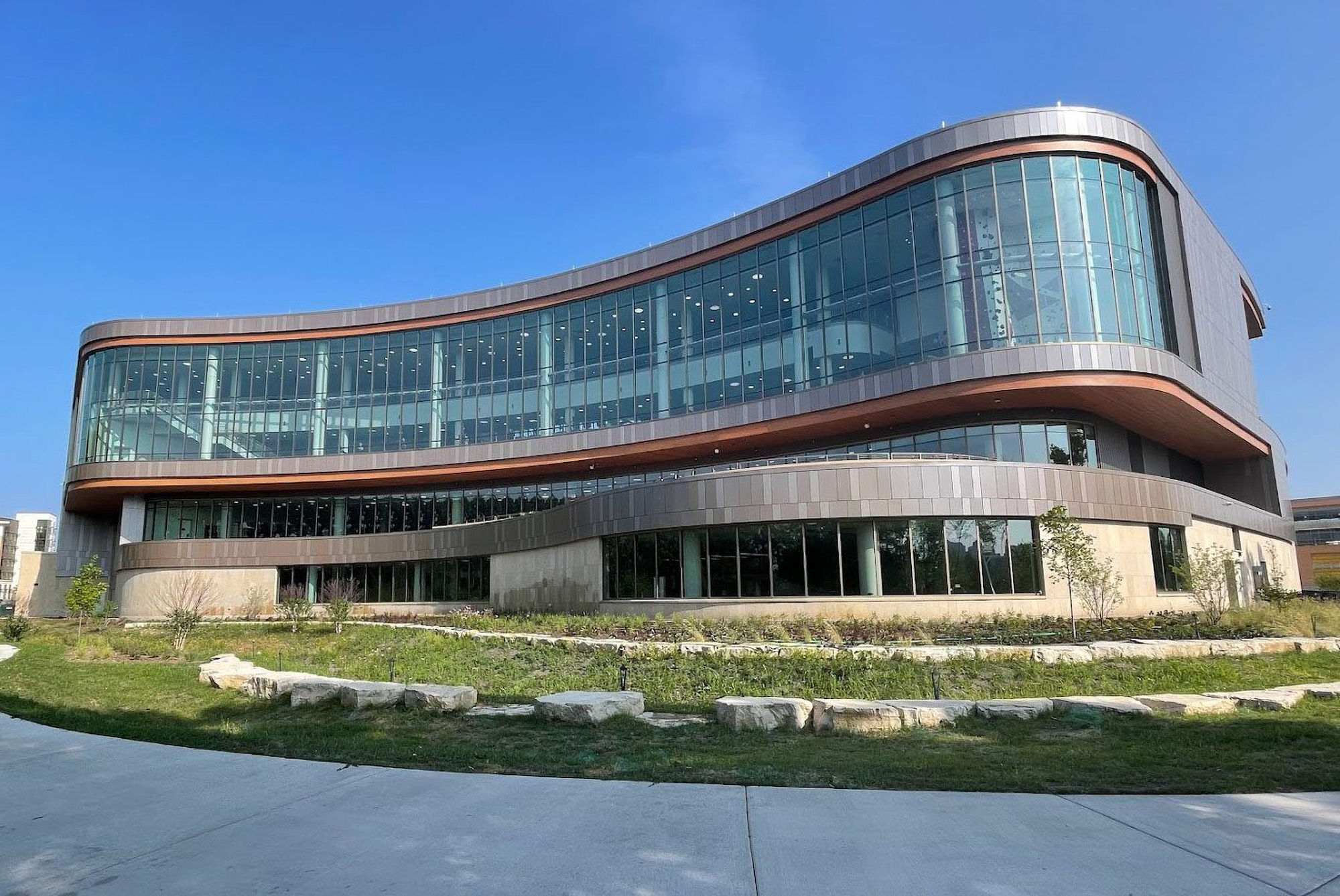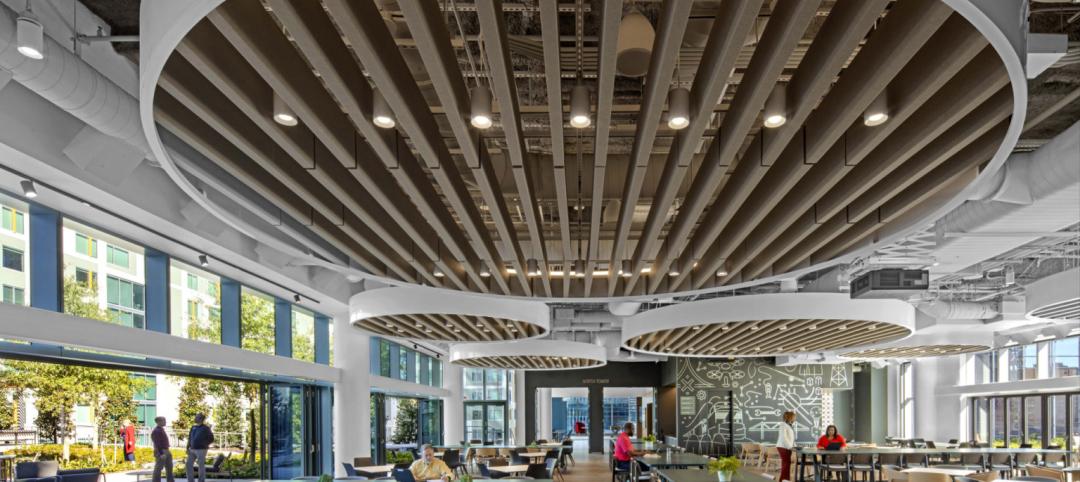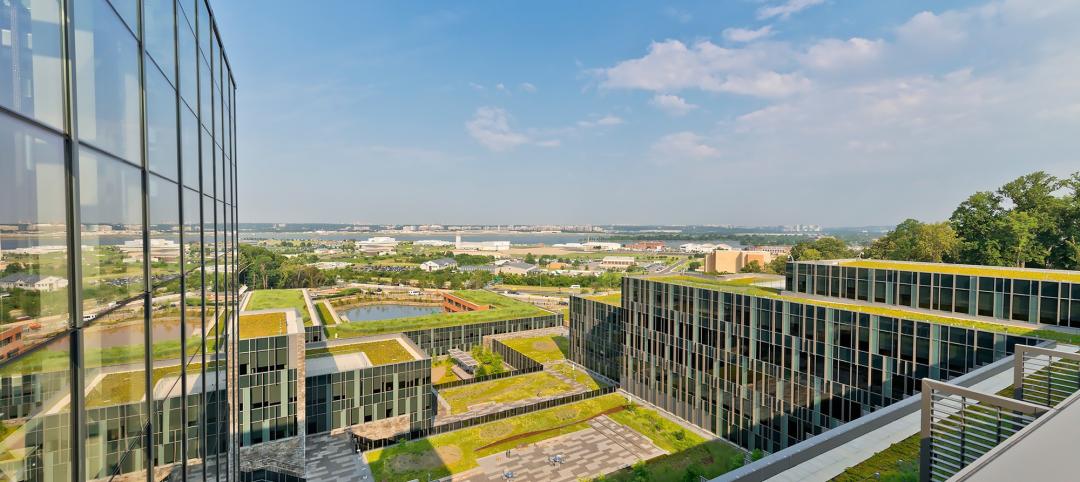In 2018 the University of Madison-Wisconsin’s recreation department changed its name from Recreational Sports to Recreation & Wellbeing in a deliberate move to broaden its service offerings. Since then, Recreation & Wellbeing (a.k.a. Rec Well) has opened two new HOK-designed rec centers that showcase the university’s commitment to wellbeing.
This is especially true in the newly opened Bakke Recreation & Wellbeing Center, which includes a teaching kitchen, mind-and-body studios, nap pods, sports simulators and spaces to support massage therapy, wellness coaching, and meditation.
In a recent LinkedIn Live, Recreation & Wellbeing’s Sadat Khan and Abby Diehl joined HOK architect Emily Ostertag to discuss UW’s new facilities and the growing trend to design and program rec centers to support mental wellbeing and holistic health. Athletic Business Magazine’s Andy Berg moderated the conversation.
View the entire discussion below or jump down to a few key takeaways.
Welcoming More Users
Sadat Khan, Senior Associate Director of Facility Planning and Operations for Rec Well, spoke of the need to make rec centers more inclusive and appealing.
“Before we started building our new rec centers, about 75% of the student population was using our facilities,” he said. “That’s good. But for a school the size of Wisconsin, it also meant up to 15,000 students were not using our spaces. So, that was a number we focused on. We needed to become more inclusive and more accessible. We worked hard to remove barriers to get people more engaged. Wellbeing was a big part of that.”
Addressing Student Needs
To ensure its new buildings met the needs of all their potential users, Rec Well surveyed students, asking them what type of wellness services and programming they wanted to see.
“The students highlighted some big buckets for us, including peer support programs, meditation, massage therapy and nutrition education,” said Abby Diehl, Rec Well’s Associate Director of Wellbeing. “We wanted to create a holistic approach around wellness and wellbeing. Rec Well is not just a place to workout. We are so much more than that.”
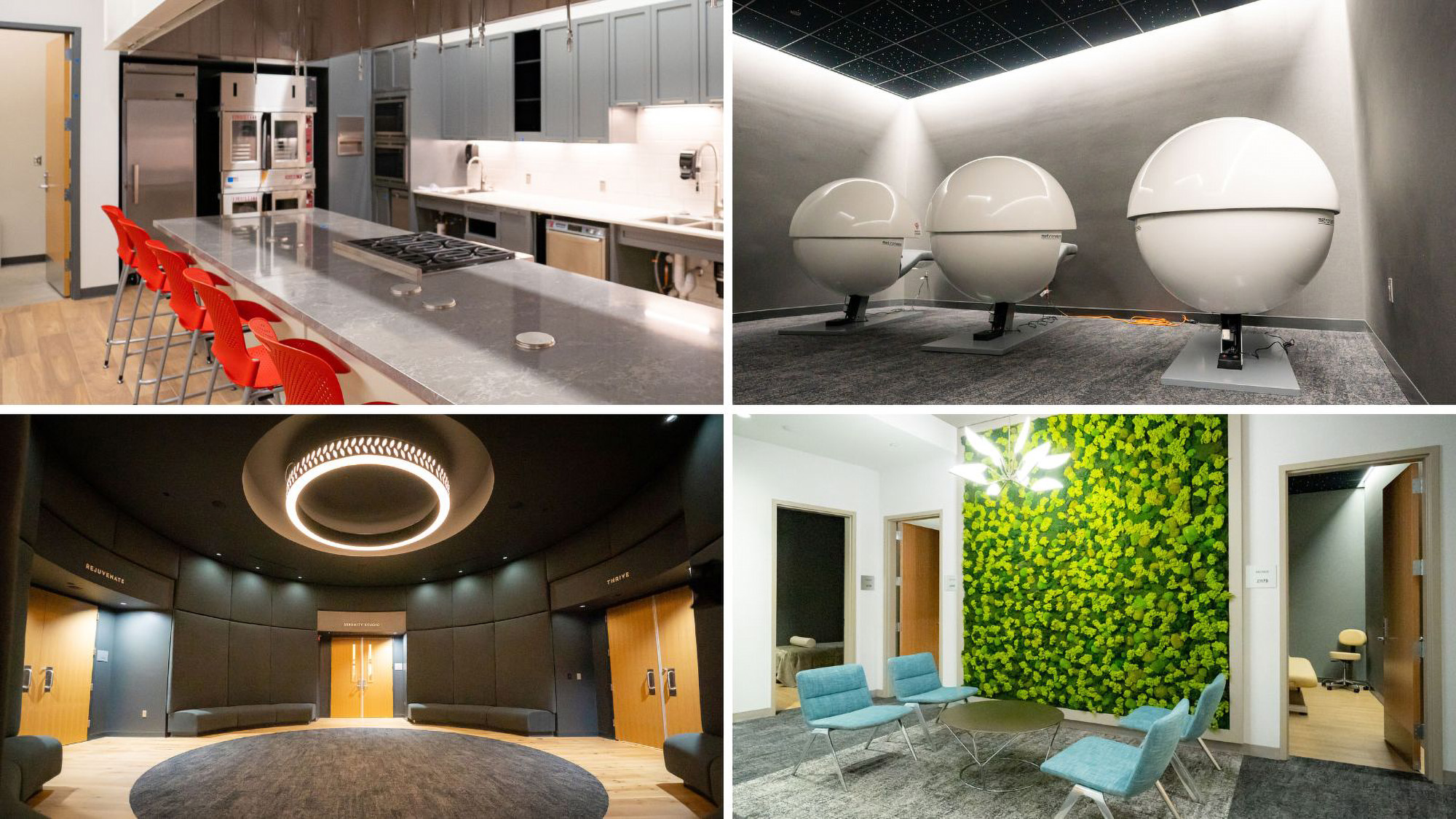
Inclusive Design & Programming
Emily Ostertag, a designer who worked on both of Rec Well’s new facilities, discussed how rec centers can make people of all fitness levels feel comfortable. One way is by providing a variety of programming. Bakke, for example, includes traditional rec center programming, such as weight rooms and hardwood courts, and non-traditional spaces such as a climbing wall and eSports studios. Another way to make users feel comfortable is by creating “neighborhoods” within the building for people of various fitness levels.
“Rec centers tend to be large, open buildings that can feel overwhelming. To balance that, we created more privatized areas—fitness neighborhoods—that make people feel more comfortable. I compare them to the booths in a restaurant that offer passive privacy. You can still see what’s going on elsewhere, but you feel like you’re in your own private zone.”
Wellness Strategies for Existing Spaces
University of Wisconsin’s new rec centers benefit from a better understanding of wellbeing than existed just a decade or two ago. Yet universities with older facilities can add wellbeing elements to existing rec centers. The panel offered several suggestions for modifying older facilities, including:
Khan spoke of ways to bring the outdoor elements inside the facility, such as a popular space within Bakke that features artificial turf and double-height windows that allow for lots of natural light.
Diehl discussed how plants, artwork, wall colors and environmental graphics can be used to benefit wellbeing.
Ostertag suggested older rec centers audit how their existing spaces are used and how they might adapt to new uses and programming. “For example, racquetball is not as popular as it once was, said Ostertag. “Yet some existing facilities have 10 racquetball courts and only two are in regular use. Those courts can be great spaces to retrofit into a new use such as a wellbeing space, a spin studio, or something else.”
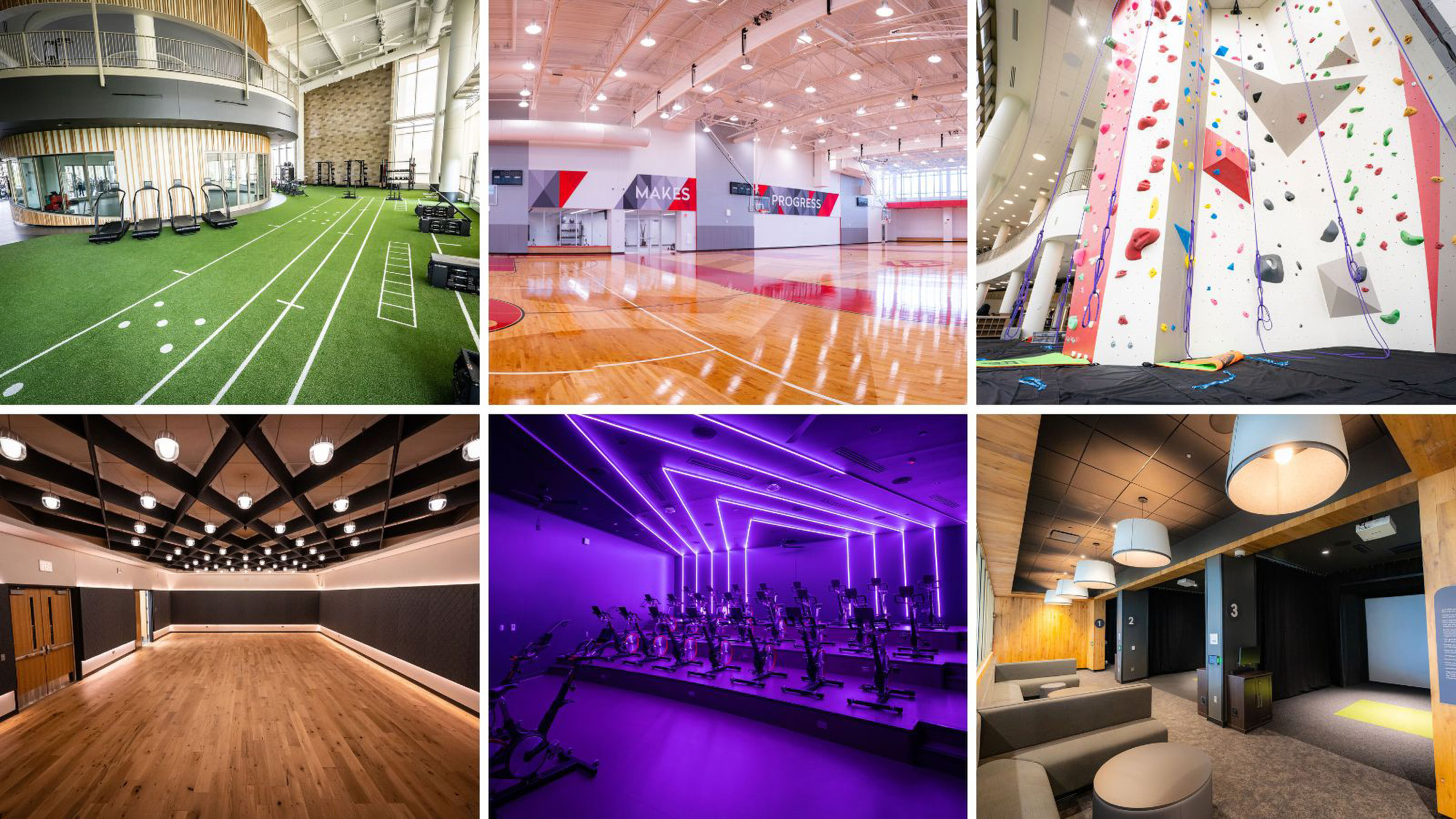
You Can’t Spell Recruitment Without Rec
While Rec Well’s new facilities were designed to address the needs of UW students, there’s no doubt the rec centers are also making an impression on students far beyond Madison.
In response to a question about how rec centers can aid recruitment, Khan told a story about one of Rec Well’s previous facilities, an outdated building known as the SERF.
“Our campus tour guides wouldn’t even bring people to the building. They’d point to it and say, ‘That’s the SERF’ and then walk in the other direction. Now, we are one of the stops on the tour. That’s a huge difference,” said Khan. “I’ve shown our new buildings to prospective students who are leaning toward going to other schools. After they see these spaces and how impressive and inclusive they are, they change their mind and say, ‘You know, I really need to consider coming here instead.’ That’s a big deal.”
More from Author
HOK | Oct 18, 2024
7 design lessons for future-proofing academic medical centers
HOK’s Paul Strohm and Scott Rawlings and Indiana University Health’s Jim Mladucky share strategies for planning and designing academic medical centers that remain impactful for generations to come.
HOK | Aug 8, 2024
6 design trends for the legal workplace
Law firms differ from many professional organizations in their need for private offices to meet confidentiality with clients and write and review legal documents in quiet, focused environments
HOK | Jun 6, 2024
HOK presents neurodiversity research and design guidelines at SXSW 2024
Workplace experts share insights on designing inclusive spaces that cater to diverse sensory processing needs.
HOK | Jan 25, 2024
40 Under 40 Class of 2023 winner Kimberly Dowdell inaugurated as AIA 2024 President
The American Institute of Architects (AIA) has announced the inauguration of Kimberly Dowdell, AIA, NOMAC, NCARB, LEED AP BD+C, Principal and Director of Strategic Relationships at HOK and BD+C 40 Under 40 superstar, as its 100th president.
HOK | Jul 13, 2023
Deep green retrofits: Updating old buildings to new sustainability standards
HOK’s David Weatherhead and Atenor’s Eoin Conroy discuss the challenges and opportunities of refurbishing old buildings to meet modern-day sustainability standards.
HOK | Jun 5, 2023
Office design in the era of Gen Z, AI, and the metaverse
HOK workplace and interior design experts Kay Sargent and Tom Polucci share how the hybrid office is evolving in the era of artificial intelligence, Gen Z, and the metaverse.
HOK | May 5, 2023
9 workplace design trends for 2023
HOK Director of WorkPlace Kay Sargent and Director of Interiors Tom Polucci discuss the trends shaping office design in 2023.
HOK | Apr 4, 2023
6 examples of modern college training facilities
HOK discusses the future of college training facilities, with six design takeaways derived from a discussion between Dan Radakovich, Director of Athletics at the University of Miami, and Trevor Bechtold, Director, HOK’s Sports + Recreation + Entertainment practice.
HOK | Feb 23, 2023
Using data to design the sports venue of the future
Former video game developer Abe Stein and HOK's Bill Johnson discuss how to use data to design stadiums and arenas that keep fans engaged and eager to return.
HOK | Jan 23, 2023
How regenerative design is driving AEC industry innovation
HOK's Sean Quinn and Microsoft's JoAnn Garbin discuss the next step of sustainability: regenerative design.

